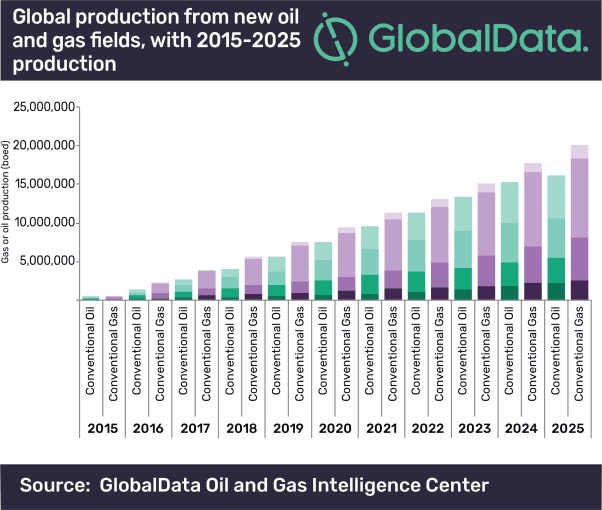Oil and gas operators globally will continue to push for faster returns with shorter cycle investments, as the industry moves away from giant developments, according to leading data and analytics company GlobalData.
Anna Belova, Senior Oil & Gas Analyst at GlobalData, comments: “Projects now go from final investment decision (FID) to first oil/gas in under 3-4 years, even for larger integrated developments with midstream components. Globally, this trend was observed with Zohr in Egypt, which produced first gas only 22 months after the FID, and more recently with Liza in Guyana.”

Belova continued: “Aside from phased approaches, shorter development timelines are enabled by a continuing push towards standardization, both with production drilling and well design. Furthermore, the offshore environment continues to move towards subsea tie-backs and floating production, storage, and offloading (FPSO) units are the dominant development concept.”
In 2020, 99 new gas projects are expected to start production and while the number of oil projects is larger at 112, gas projects will be producing 17% more hydrocarbons on a per barrel of oil equivalent (boe) basis, by 2023 once they reach maturity. With uncertain long-term demand, oil and gas operators will shy away from high-cost oil reserves. While 14 ultra-deepwater oil and gas projects are expected to commence production in 2020, all but two projects are located in Brazil and the United States Gulf of Mexico.
About GlobalData
4,000 of the world’s largest companies, including over 70% of FTSE 100 and 60% of Fortune 100 companies, make more timely and better business decisions thanks to GlobalData’s unique data, expert analysis and innovative solutions, all in one platform. GlobalData’s mission is to help our clients decode the future to be more successful and innovative across a range of industries, including the healthcare, consumer, retail, financial, technology and professional services sectors.




